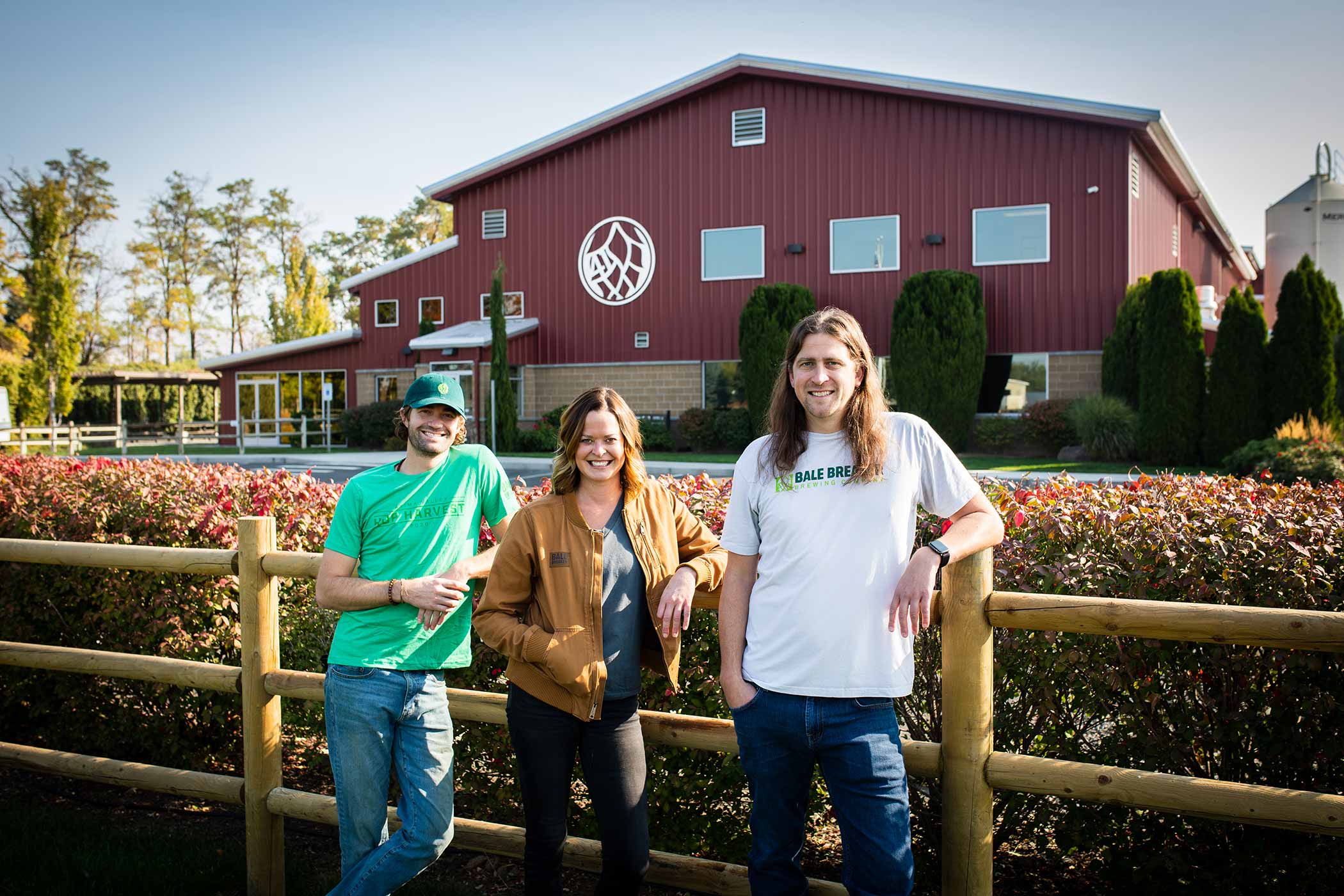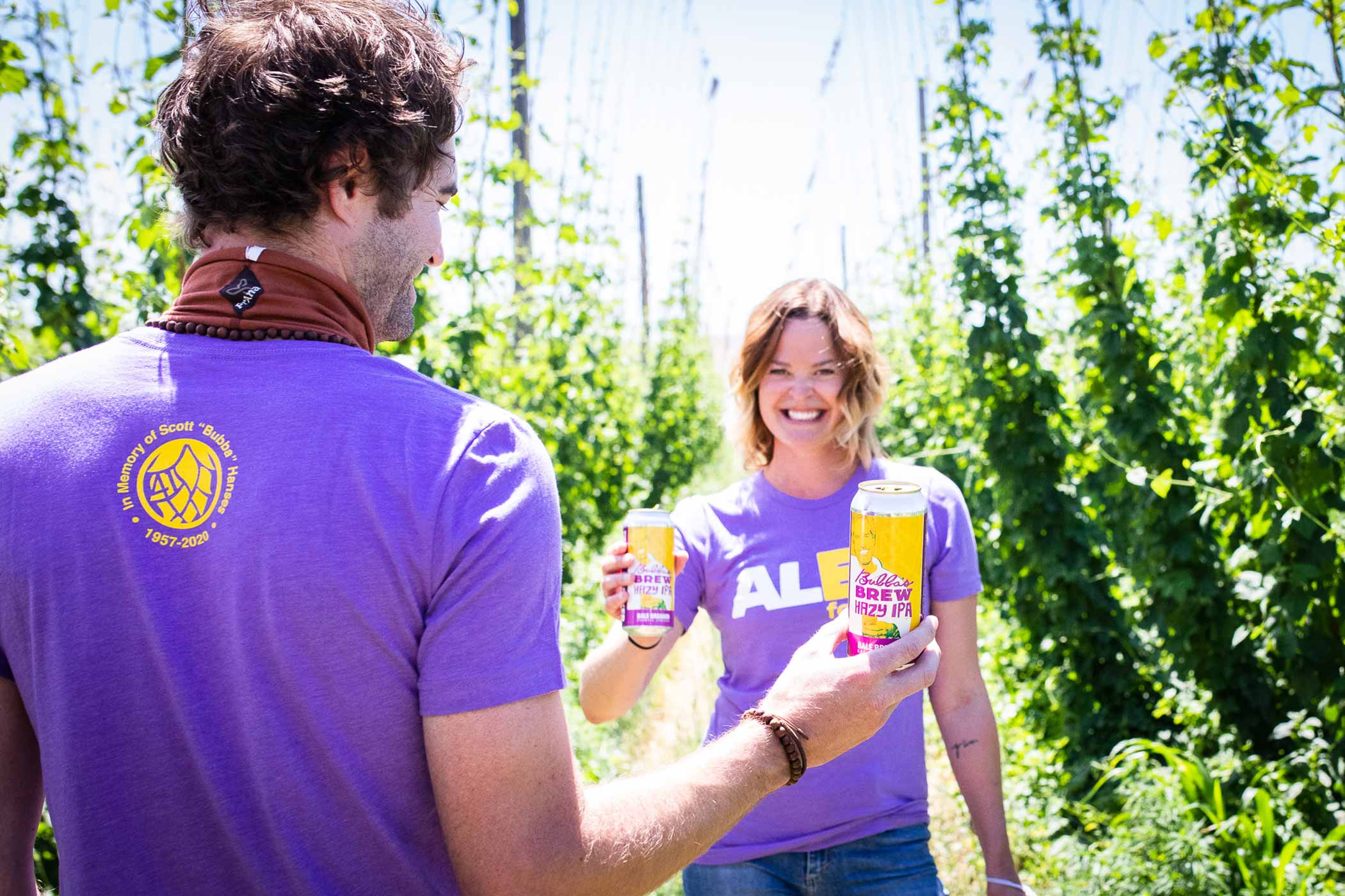Shop
Breaking Bales (and Tacos) With Bale Breaker: The Freshest Fresh Hop Beers
Freshhhhhhhh!
Looking for More?
Two years ago, Firestone Walker Brewmaster Matt Brynildson shared a story with me. He had just come back from picking hops in the Yakima Valley. As he stood in a hop field with his team, looking up at the green cones all around him, he thought, “The next great IPA is hanging above us.” That year, Brynildson brought Firestone’s first trial with then HBC 586 (recently released commercially as Krush), sharing the beer with friends at Bale Breaker. “We had a ceremony where we cracked the beer; it was actually pretty magical for me,” recalls Brynildson.
Two weeks ago, as I sat drinking a fresh hop pale ale steps away from vibrant green Mosaic hops strung up on trellises in Bale Breaker’s gorgeous garden, I finally understood what Brynildson meant.
There’s nothing quite like drinking a beer made with hops that spent literally just four minutes from picking to pint (well, from the picking machine to the brewery, at least. Getting to the glass takes a little longer). Bale Breaker is like a carefully knitted fabric made of wire that hangs across poles in a hop yard, connecting growers, farmers, brewers, and friends.
Unlike anywhere else in the country, those wires cross at Bale Breaker, right at the heart of everything.
Because at this family-run brewery, wife-and-husband team Meghann Quinn and Kevin Quinn and Meghann’s brother (also) Kevin Smith (known as “Smitty”) aren’t just making beer, they’re growing it, too. Well, that is, one of the beer’s main ingredients.
“To our knowledge, we’re the only [brewery] on a commercial hop farm, and we’re the only one that grows all their own hops,” Kevin told me as he walked us around the 16,000-sq-ft facility in Yakima, WA. “In our year-round beers, one hundred percent of the hops in there we grow.”
So it made sense that when Yakima Valley Tourism brought me and Hop Culture Social Media Manager Magic Muncie to go where the hops are born (could that be the name of a new children’s book?), they took us to Bale Breaker first.
“Bottom line: No farmers, no beer,” Brynildson told me. “[So] It’s an honor to be here where these hops are being born.”
At Bale Breaker, we experienced that same sense of awe and honor.
And we know we’re not the only ones because if we had to imagine (and pardon our French), this brewery and farm must be the wet-hop dream of brewers everywhere.
Hops Run in Bale Breaker’s Bines
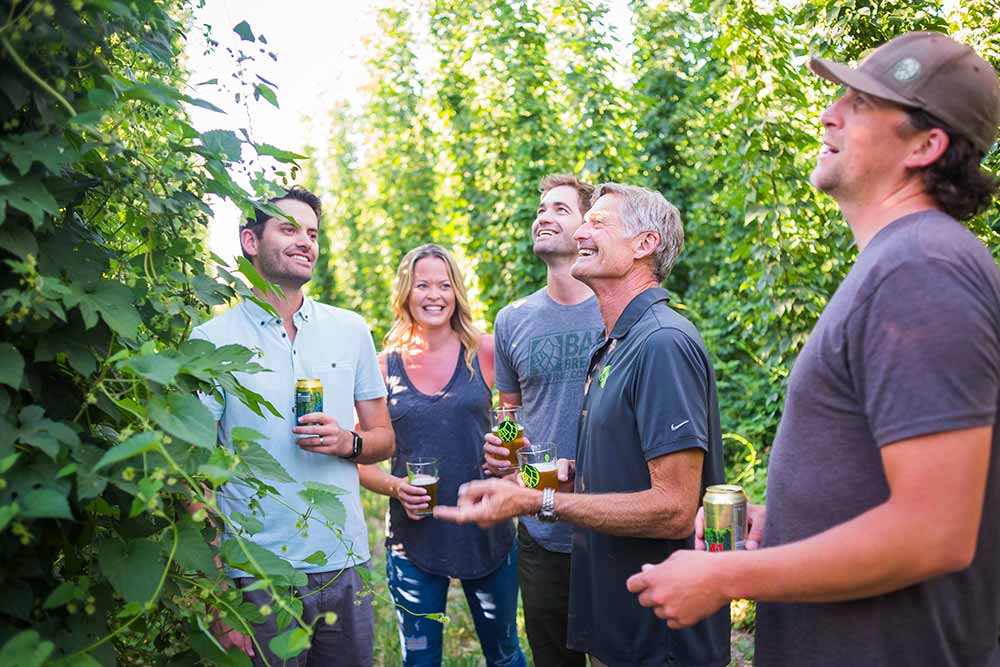
Photography courtesy of Bale Breaker Brewing Company
Honestly, it’s not too surprising that Meghann, her partner, and her brother started a brewery.
Beer flows in their veins.
Their parents, Cheryl Hanses Smith and Mike Smith, own Loftus Ranches, a fourth-generation hop farm in Yakima Valley.
“At the time, people were getting really excited about IPAs,” Meghann told me. “All of a sudden, growing up on a hop farm seemed pretty cool. That got the wheels in motion.”
But it wasn’t until after college that joining the beer business started to click.
“I didn’t even know what hops were,” says Kevin when he first started dating Meghann in college. “But [during harvest] we’d come back most weekends just to see and be a part of it.”
At the time, Meghann’s older brother Pat started helping out on the farm, Smitty had been working at a brewery in Seattle, and Meghann and Kevin were considering career changes.
They realized something.
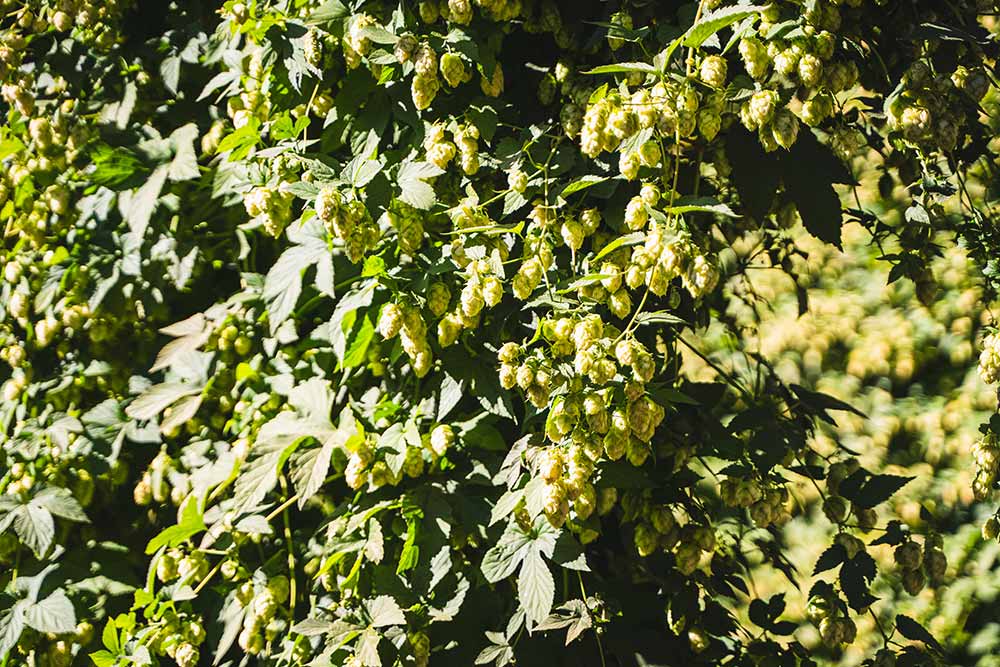
Photography courtesy of Magic Muncie | Hop Culture
“Seventy-five percent of the U.S. hops are grown in the Yakima Valley, but no farming family has a brewery, too,” says Kevin.
The pair thought they had a pretty cool angle.
“We see the hops from ground to glass,” says Kevin. “From farm to fridge.”
And so did Pat, who, while getting a double master’s—an MBA and a master’s in agricultural economics—wrote a business plan for Bale Breaker as his capstone project. The idea received so much praise and feedback that the Quinns knew they were on to something.
“[Academics] and business people thought it was a good idea,” says Kevin, who was about to turn thirty. “If we’re going to do it, it’s now or never.”
Over ten years later, Bale Breaker has become one of the most unique breweries in the country.
And it all starts with the hops.
It’s right in the name, for gosh sake.
“For years, hops had been leaving the farm, and other breweries had been breaking bales and using them,” says Kevin, who points out the name also refers to an actual piece of equipment used in processing hops. “Now we’re going to do that.”
“It’s almost like breaking bread,” Muncie interjects. Which, metaphorically, when you sit down to drink a few beers at Bale Breaker, is pretty much what you’re doing.
From Farm to Fridge at Bale Breaker
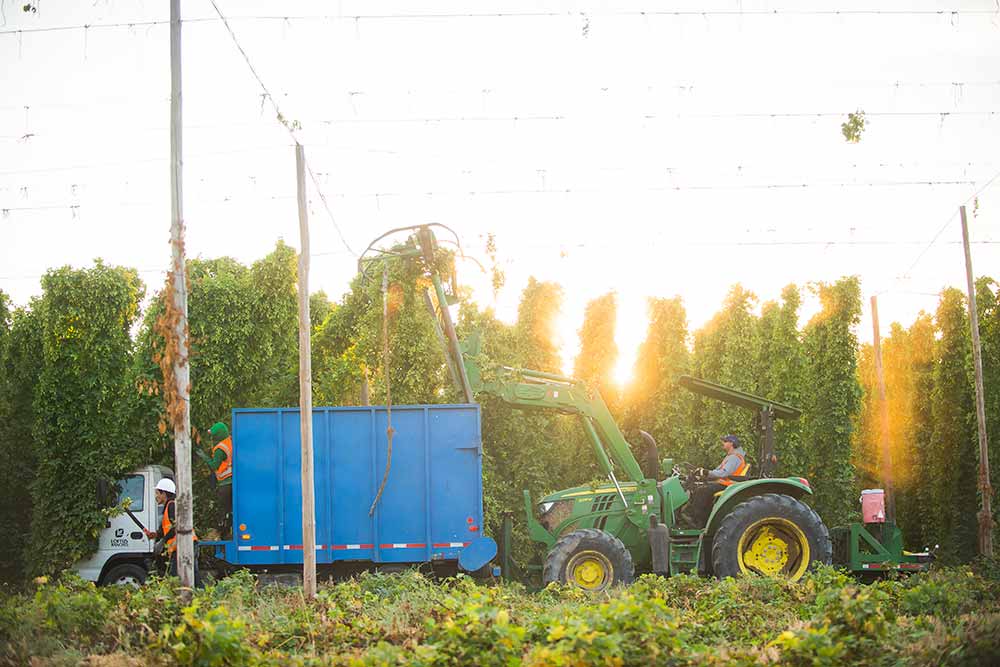
Photography courtesy of Bale Breaker Brewing Company
We’re standing in an orange hallway to the right of Bale Breaker’s taproom bar. On the wall, Kevin shows us a range of five photos.
Each depicts a different part of the hop’s journey from that bine into the bottle.
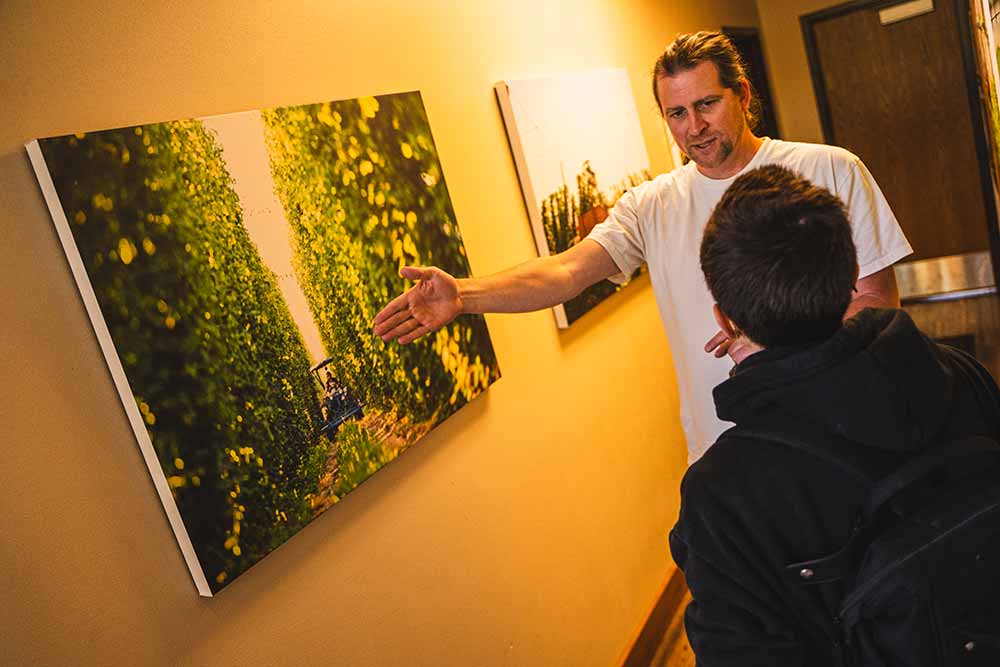
Photography courtesy of Magic Muncie | Hop Culture
In fact, it’s where Kevin starts our tour (I can’t say we’ve ever started a brewery tour like that…and we’ve been on many!).
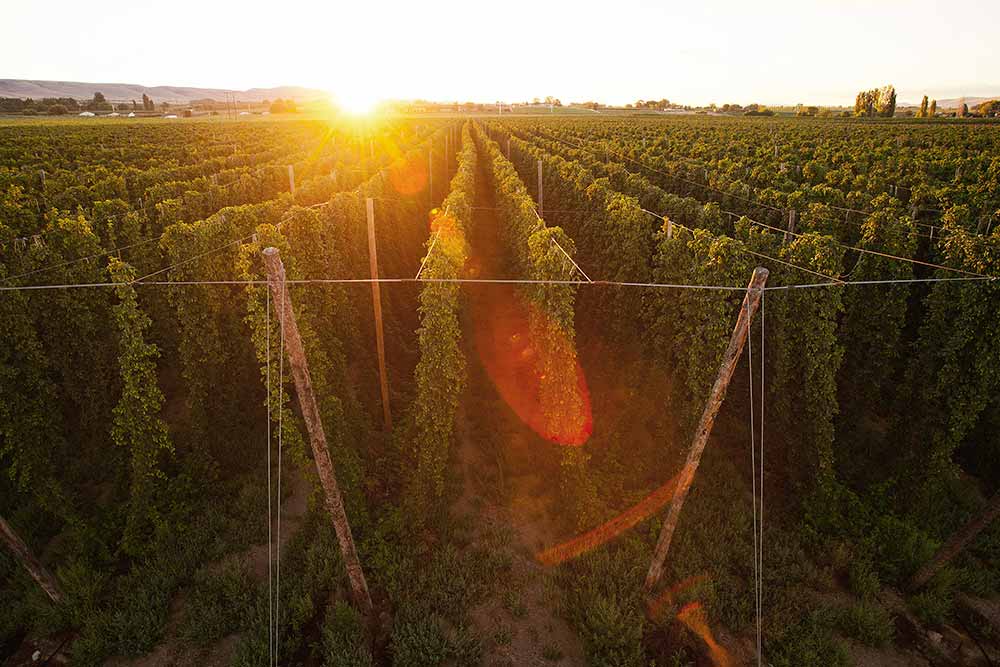
Photography courtesy of Bale Breaker Brewing Company
In the first photo, Kevin shows us how the hops are planted. Between poles in a field, twin is strung to the middle of the row at the top of the wire, so that the hop row is accessible to drive down. “At harvest, when the hop plant is cut at the base of the plant by the bottom cutter tractor, the hop bine swings to the middle of the row and can be cut by the top cutter,” says Meghann.
To harvest the buds, a hop truck runs in neutral between the poles, and a machine called a top cutter pushes you down the row.
A person called a weaver, whose job it is to feed the bine into the top cutter, stands on top of a truck bed—bines of hops all around him.
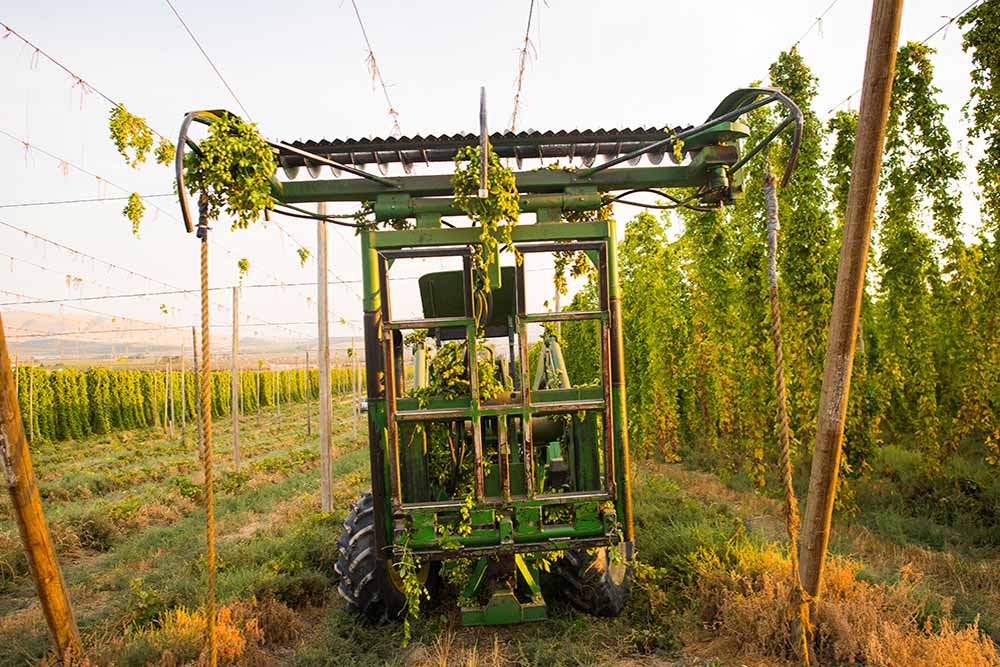
Photography courtesy of Bale Breaker Brewing Company
“This isn’t a fun job because the texture of the hop bine is like sandpaper,” explains Kevin. “So these guys have masks and glasses on with their hoods fully closed, and sometimes it’s 105 degrees.”
He adds, “They’re just getting hit in the face with hops for twelve hours straight.”
But the weaver has an essential function. “Basically, the weavers make sure the hanging hop bines are fed into the bed of the hop truck so that when the top cutter cuts the top of the bine, and it’s laid out as ‘nicely’ in the truck bed as possible, they don’t show up at the picking machine all tangled up,” explains Meghann.
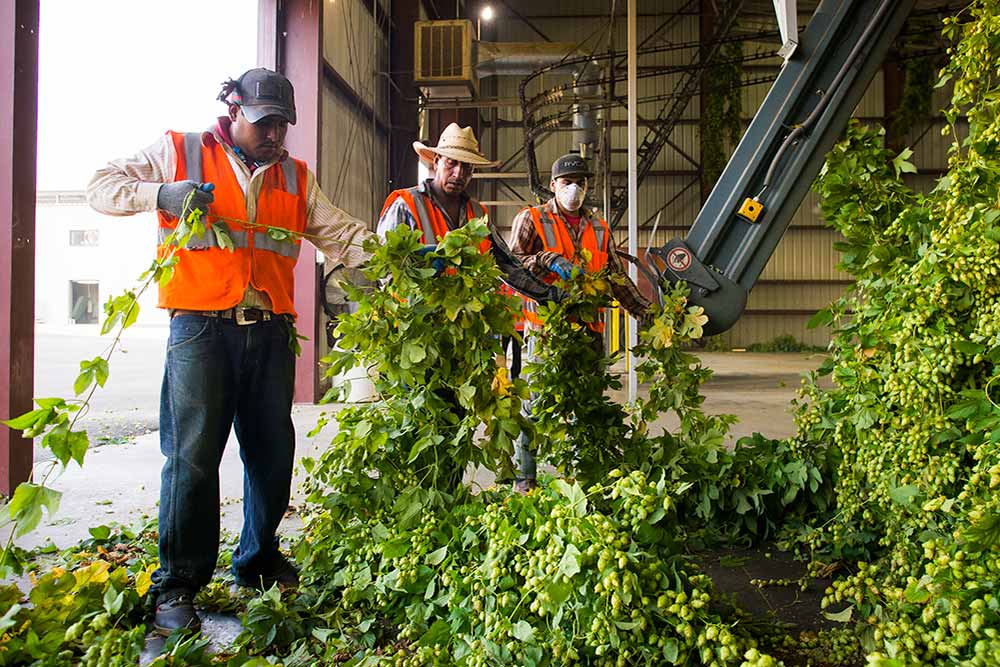
Photography courtesy of Bale Breaker Brewing Company
The next photo shows the picking machine where the leaves and cones get knocked off, separating the leaves and stems from the hop cones before they head to the kiln.
“The hops come in at about seventy-five percent moisture, and we want them down to between nine and ten percent for storability,” says Kevin, pointing to the next photo.
Kevin says this is the longest part of the process, taking seven to eight hours. “We use big 75-horsepower fans to blow warm air through the bottom, driving off the moisture,” he explains.
In the last photo, Kevin shows us the baling room where the hops condition for about twenty-four hours before taking a trip on a conveyor belt. “We push the hops in with these electric forklifts, and they weigh out into a hopper of one hundred pounds,” says Kevin. “A hydraulic press comes down, presses that, another one hundred pounds go in, the press goes down, hits that again, and then they’re two-hundred-pound bales.”
Running for twenty-four hours from day one of the harvest until they’re done, Bale Breaker takes pride in the quality of its hops and beers.
Don’t Open a Brewery Without a Lab

Photography courtesy of Magic Muncie | Hop Culture
As we exit the hallway, Kevin leads us past the brewery’s first-ever quality control lab.
It’s a part of the brewery Kevin speaks about proudly.
With a background in restaurant franchising and consulting, respectively, Kevin and Meghann had zero experience running a brewery. When they decided to go all in on Bale Breaker, they leveraged relationships from Loftus Farms for advice—Sierra Nevada, Russian River, and Odell.
One thing they kept hearing: Build out a lab. “You’re not going to know what to do with it at first, but you need to have it,” he says they told him. “You can’t open a brewery and make sh**ty beer!”
When the brewery expanded in 2016 from 6,000 to the current 16,000 sqft, it installed a second lab upstairs, tucked into a corner in the back with a full-time lab tech, Hayden Watkins.
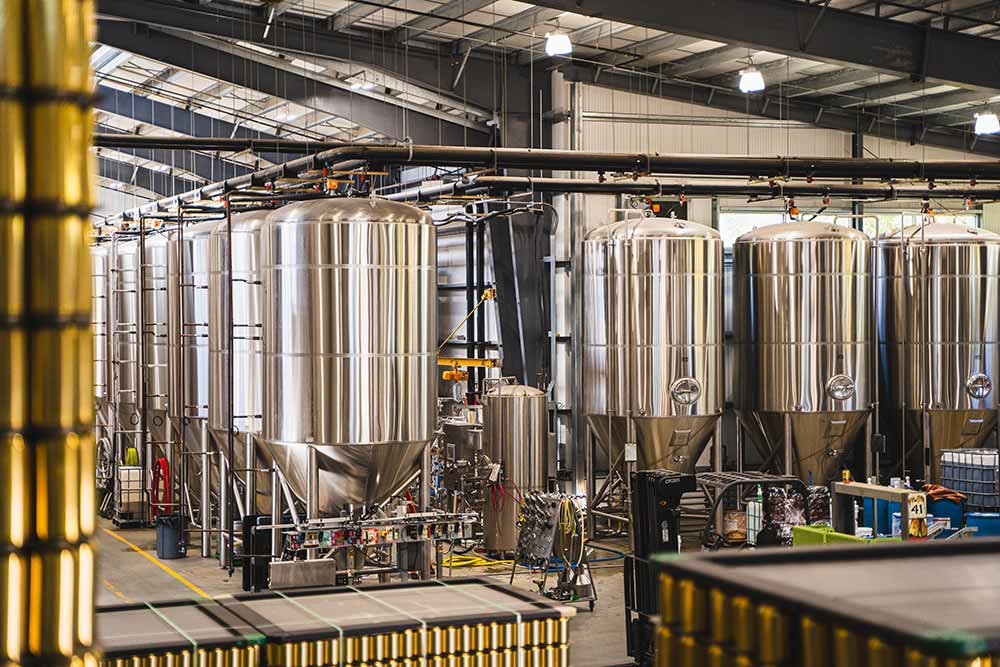
Photography courtesy of Magic Muncie | Hop Culture
On the day we visited, Watkins stood in front of various apparatus and a blue-hot flame from a Bunsen burner, something I hadn’t seen since taking chemistry in high school (hey, I’m a writer).
“I use fire to sterilize everything,” says Watkins, whose day-to-day includes testing samples from each batch of beer five times throughout its journey in the brewery.
“We know everything leaving this brewery is clean beer,” explains Kevin. “And if something does happen, we can catch it early on.”
As we leave Watkins to his science experiments and walk down the stairs back to the brewhouse floor, Kevin tells us all we need to know about Bale Breaker’s quality control.
“Ken Grossman said we were doing a good job,” he laughs.
High praise from one of the most iconic people in our industry.
You wouldn’t know it from walking around the vast space now, but Bale Breaker started small.
Three Tanks, Two Beers
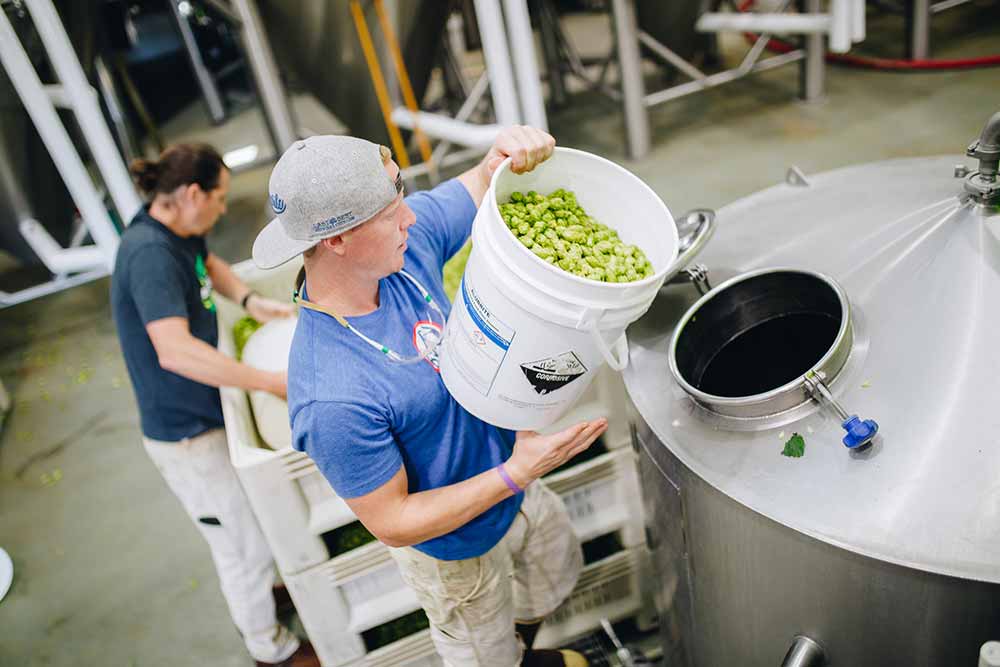
Photography courtesy of Bale Breaker Brewing Company
When Bale Breaker first opened, it had only three tanks—a thirty-barrel, sixty-barrel, and ninety-barrel—along with two beers—Topcutter IPA and Field 41.
“We literally opened with two beers on tap,” says Kevin with a smile as he lays down a tray full of fresh-hop collabs on the picnic table. “Now, we have quite a few more.”
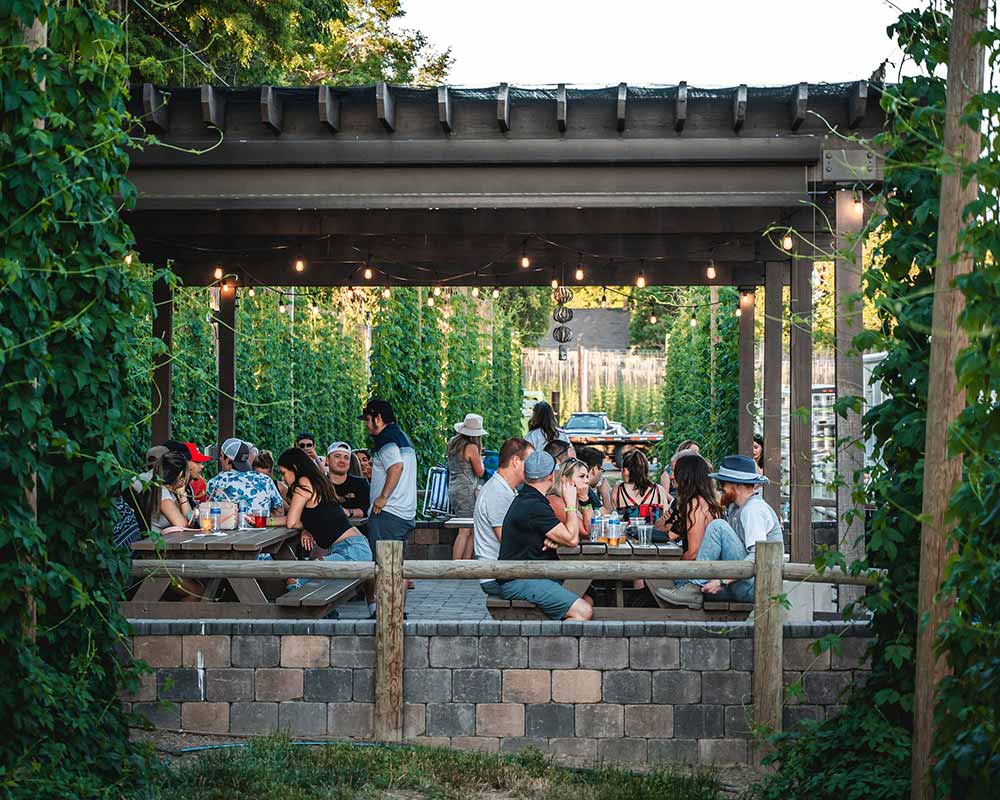
Photography courtesy of Bale Breaker Brewing Company
We’ve ventured out to the beer garden, ordered tacos from the Buen Taco food truck, and parked ourselves on picnic tables.
We’re in Yakima Valley for fresh-hop season, so we’ve ordered a full fresh-hop flight, but I asked Kevin to pour us a little sample of Topcutter IPA as well.
Because it’s one of the two original beers that embody Bale Breaker.
Topcutter IPA

Photography courtesy of Bale Breaker Brewing Company
This should tell you something: According to Kevin, eleven years later, Topcutter IPA still makes up forty percent of Bale Breaker’s sales.
The flagship West Coast IPA has become timeless, surviving from a small homebrew setup to a commercial brewery.
Although Bale Breaker opened in April 2013, Kevin says he and Meghann moved back to Yakima in March 2012.
In an old milk house, they set up a SABCO BrewMagic® homebrewing system.
For six months, they brewed test after test of Topcutter and Field 41.
“We did over a hundred test batches,” says Kevin.
The core of each Bale Breaker beer is simple: “We want very little malt profile in our beers because we want the hops to be the showcase,” explains Kevin.
Today, that means brewing Topcutter with two-row, Munich, and carapils (although Kevin says they used some C malts at the time because, you know, it was the early 2010s).
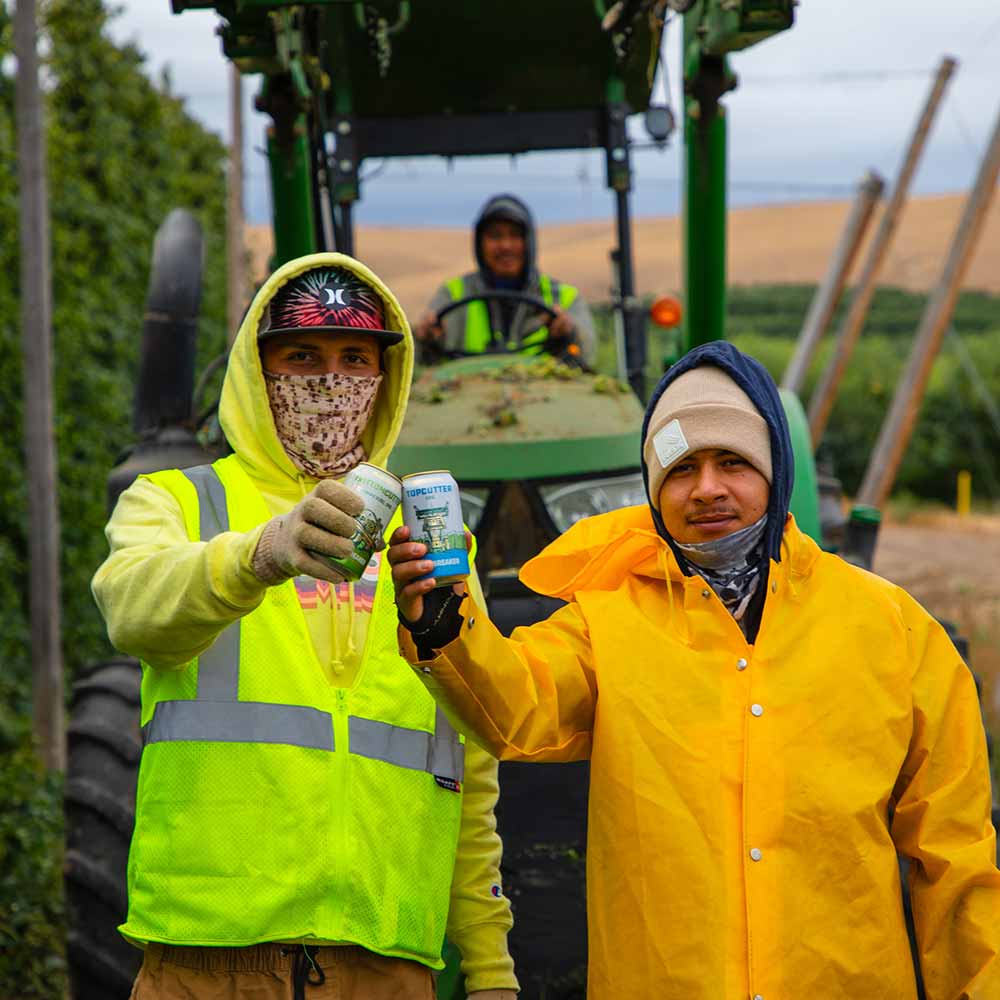
Photography courtesy of Bale Breaker Brewing Company
“Back then, if you said hoppy beer, people thought it meant bitter,” says Kevin. “We wanted to show people there’s so much more that hops give beer than just bitterness.”
Topcutter tops out at seventy IBUs and 6.8% ABV, which Kevin fully admits seemed less bitter at the time.
Bitterness comes from Simcoe, a Warrior hop extract, and HBC 682. Late additions of Simcoe, Citra, and Mosaic round out the beer’s complex balance of fruity and floral.
Meant to showcase Yakima Valley hops, Topcutter is nothing if not a taste of terroir in the valley.
Much like the second OG beer.
Field 41
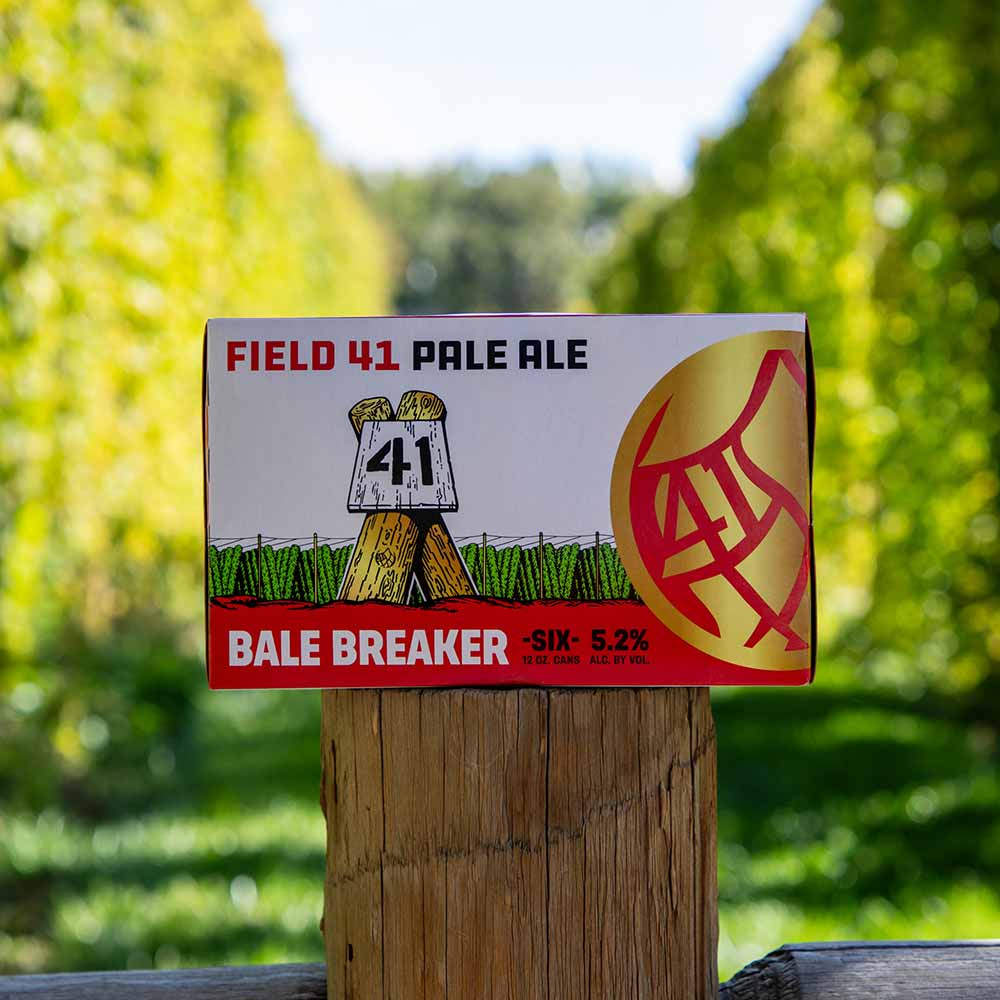
Photography courtesy of Bale Breaker Brewing Company
Named after “the field that surrounds us,” says Kevin, Field 41 starts with a grain bill of Munich and Vienna malt, white wheat, carapils, and flaked oats.
Technically considered a pale ale, Field 41 drops the IBUs significantly to forty. Although, you’ll still find a very present hop character from Simcoe, Laurel, and Cascade (at one time, Ahtanum, but the demand dropped so much for that hop that Bale Breaker doesn’t grow it anymore).
Pretty sessionable at only 5.2% ABV, this pale ale is perfect for seasonal sipping.
A Bushel of Fresh-Hop Collabs
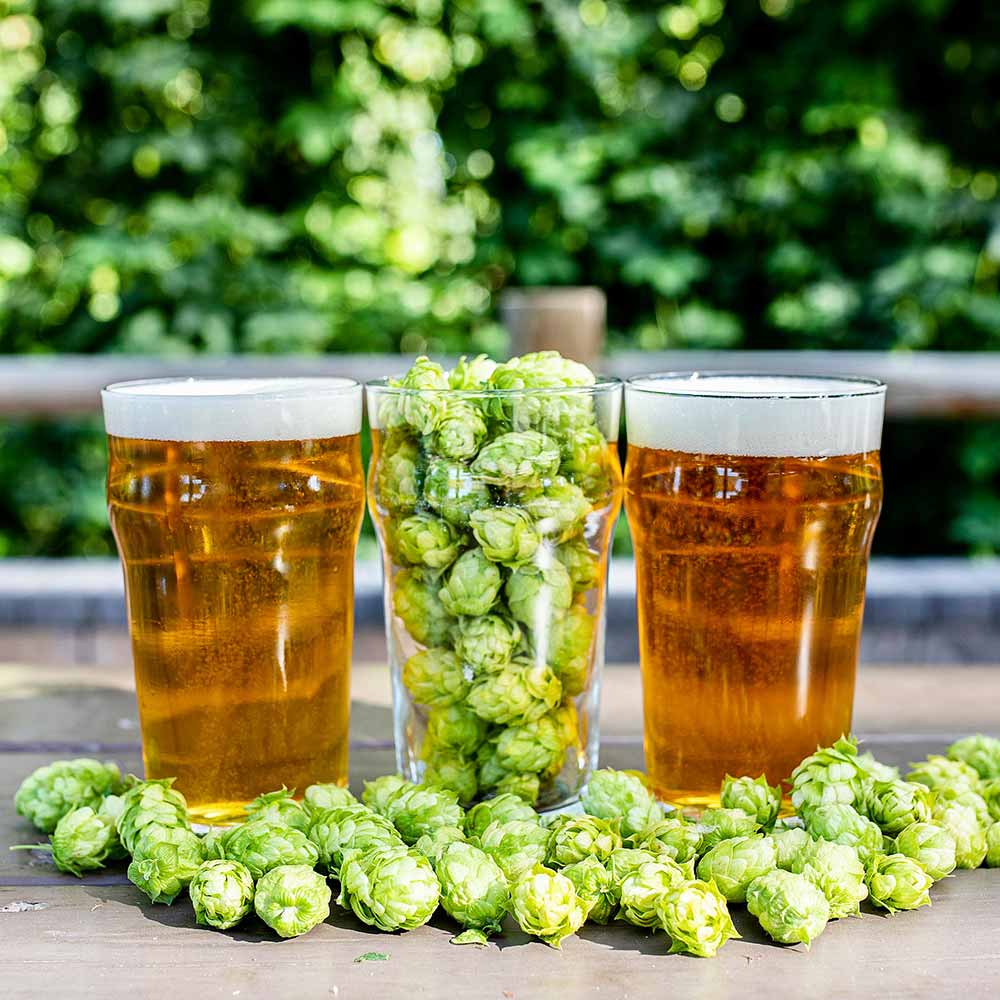
Photography courtesy of Bale Breaker Brewing Company
Oh, right, so those fresh-hop beers awaiting us—many turned into collabs this year.
So many people reached out to Bale Breaker that “we just knew we’re going to do nothing but make fresh-hop beers for a month,” laughs Kevin.
It’s a testament to Bale Breaker’s reputation in the industry.
“It literally takes us four minutes to get hops from the picking machine to the brewery,” says Kevin. “We’re spoiled, but I don’t think there are any fresher fresh-hop beers.”
All the better for us.
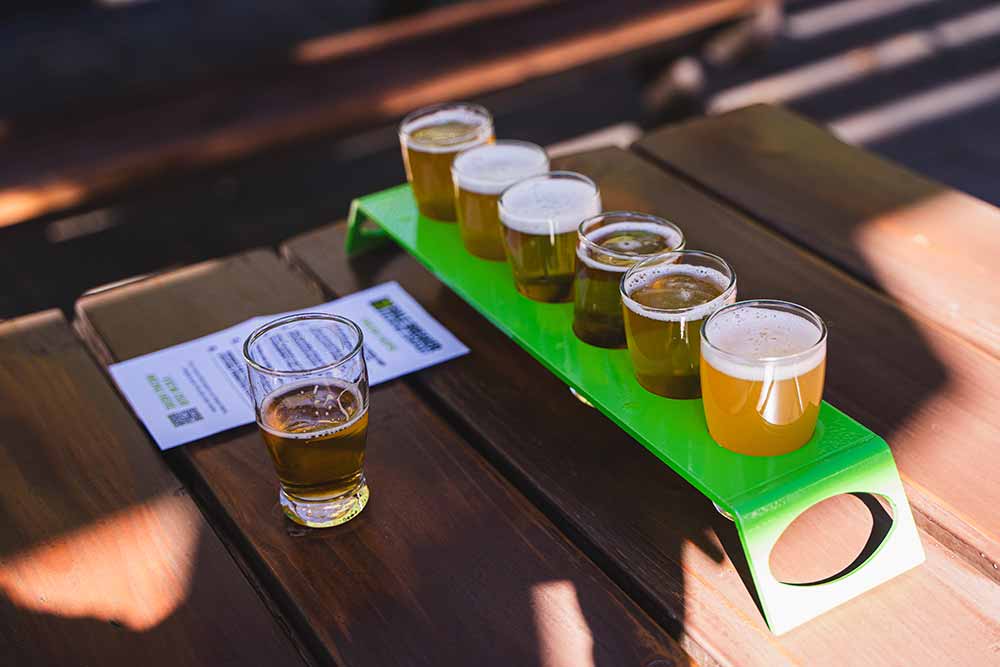
Photography courtesy of Magic Muncie | Hop Culture
Educated Guess Fresh Hop
A collab with the brewing program at Central Washington University (CWU) in Yakima, Educated Guess, brought members of the program out to Bale Breaker for the brew day.
A base of two-row, flaked wheat, and Munich malt gives way to wet Simcoe.
“Then we took some Citra off the baling room floor and used a mini pelletizer to make our own freshly dried Citra hop pellets,” says Kevin. “And there’s Mosaic Cryo, too.”
One of my favorites of the day, Educated Guess, gave me brilliant notes of grapefruit, peach, and, oddly enough, blueberry.
Long Distance Krush Fresh Hop Pale
One of Muncie’s favorites from the entire fresh-hop lineup, Long Distance Krush utilizes YCH and Haas’ latest Krush hop (formerly HBC 586) as the fresh hop along with Simcoe Cryo and Mosaic Cryo.
“So money,” says Muncie as he goes back to finish the taster. “It’s just straight strawberries and super crushable.”
The beer went international, featuring Victoria, BC’s Driftwood in what Bale Breaker called a “heartfelt collaboration.”
Dare we say we could taste the love here?
“Definitely one of the best of the trip, if not the best of the trip so far,” says Muncie. “And we’ve had dozens of fresh-hop IPAs.”
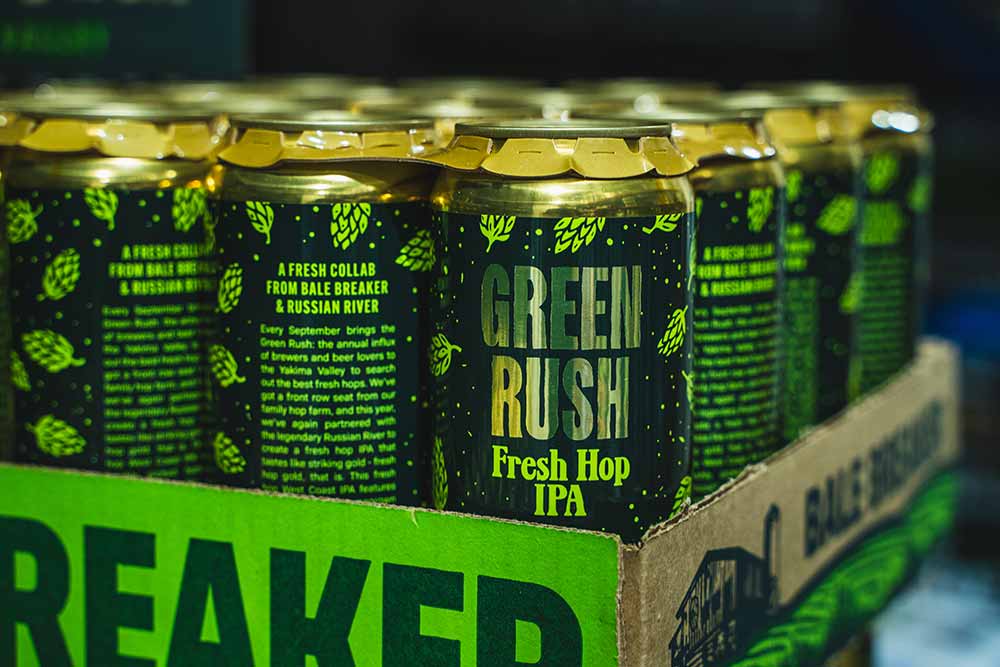
Photography courtesy of Magic Muncie | Hop Culture
Green Rush Fresh Hop IPA
A collab with Russian River, Green Rush Fresh Hop IPA is a tribute to Simcoe.
“Vinnie [Cilurzo] was an early adopter of Simcoe,” explains Kevin, “and our farm, Loftus Ranches, was one of the first to plant it back in the day.”
Last year, when the Russian River Brewing Company co-founders came out to celebrate Bale Breaker’s tenth anniversary, “we asked them if they wanted to do a collab because we’d never brewed with them,” says Kevin. “[Vinnie] said, ‘Yes, but I want it to be a fresh hop!’”
According to Kevin, Vinnie didn’t shy away from truly contributing.
“He’s like, what time do we go fill that hopback?” laughs Kevin. “I’m like, 7 a.m. He said, ‘All right, I’m there!’”
With two-row and flaked rice, this fresh-hop IPA also includes wet Simcoe, Citra Cryo, and Krush Cryo.
Citra Slicker Wet Hop IPA
A collab with Cloudburst, Citra Slicker includes Warrior and wet Citra and Citra and Mosaic in the dry hop.
“It tastes like the most classic version of a fresh-hop IPA you can possibly make,” remarked Muncie.
And that’s pretty much everything you need to know about this beer.
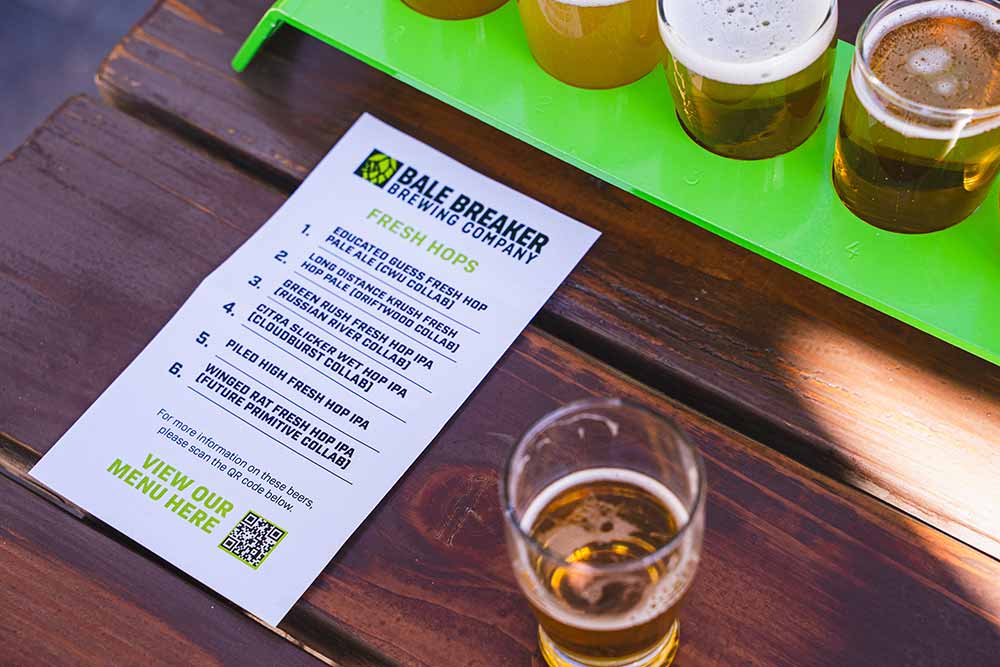
Photography courtesy of Magic Muncie | Hop Culture
Piled High Fresh Hop IPA
Piled High is one of the most essential beers at Bale Breaker.
“It’s the first fresh-hop beer we ever did,” says Kevin.
That first year, “We just walked down the road to the Simcoe field and were walking through, smelling the hops,” says Kevin. “We cut the bottom of the hops with a pocket knife and just yanked it down. Then we sat on the patio and just handpicked and filled five-gallon buckets.”
First brewed on the original ten-gallon SABCO BrewMagic™ homebrew set up in the old dairy barn, this fresh-hop beer has been in the rotation since the brewery first opened.
When Bale Breaker entered the first version into the Fresh Hop Ale Festival, a local celebration of fresh-hop beers that marks the end of every hop harvest, the IPA placed third.
“We thought that was pretty good because essentially [we brewed it] on a homebrew system,” laughs Kevin.
Originally an imperial fresh hop, Piled High has been dialed back over the years but still slaps you in the face.
This year’s version included fresh Simcoe, Citra, Mosaic, CTZ Cryo, and Simcoe Hyperboost.
Winged Rat Fresh Hop IPA
A collab with Future Primitive Brewing in Seattle, WA, Winged Rat starts with flaked wheat and Munich malts before getting dosed with wet Simcoe, freshly kilned Simcoe, Mosaic, and Krush Cryo, and fermented with Krush Hyperboost.
It’s Mostly All About Hops, But It’s Not Always About the Hops
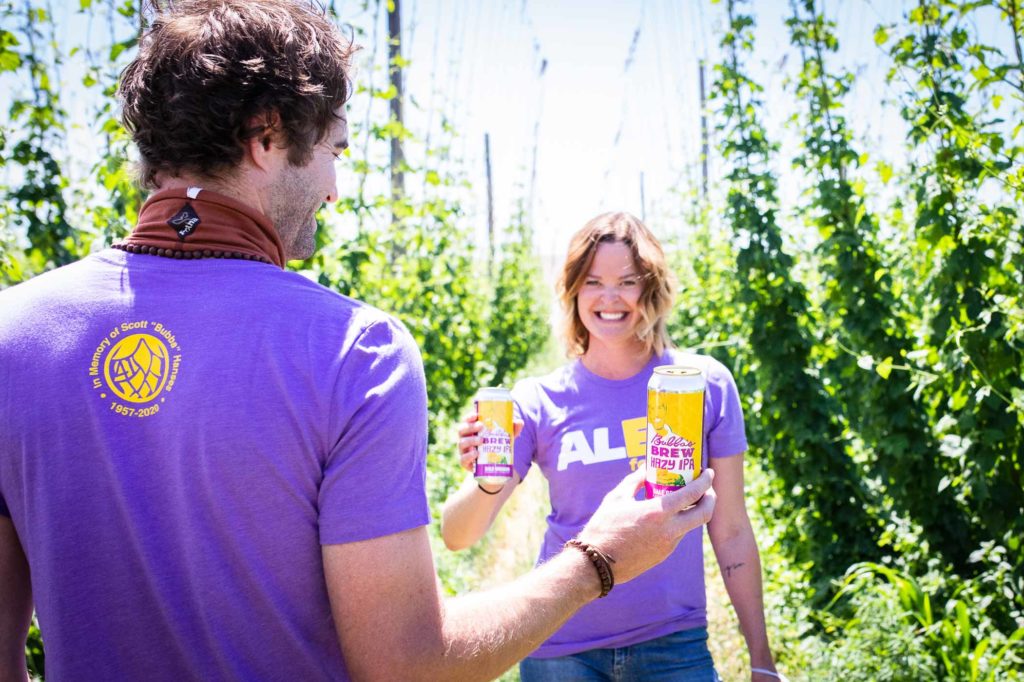
Photography courtesy of Bale Breaker Brewing Company
Producing hops mere steps from the brewery has become Bale Breaker’s calling card. But we’d argue what Bale Breaker does “off the field” might matter more.
In 2013, Meghann, Kevin, and Smitty helped start the Ales for ALS™ program with Mike and Cheryl Smith from Yakima Chief Hops (YCH) and Loftus Ranches.
Designed to raise awareness and money to find treatments for amyotrophic lateral sclerosis (also called ALS or Lou Gehrig’s disease), the initiative personally hit home for the Quinn and Smith family. Meghann, Smitty, and their parents have nine family members who have passed away from the disease.
“Ales for ALS™ is really near and dear to our hearts,” says Meghann. “Our biggest goal is to find a cure.”
Every year, the family’s hop farm—Loftus Ranches—donates hops to create a unique blend. Another big hop purveyor in the area, YCH, scales things up, adding to the blend, pelletizing the hops, packaging them, and shipping them to any brewer around the country who asks. In receiving the free hops, the brewery agrees to brew a beer using the blend. Additionally, they donate at least one dollar from the sale of every pint to the ALS Therapy Development Institute (ALS TDI), the nonprofit biotech and comprehensive drug discovery lab dedicated to researching treatments for ALS.
So far, the program’s impact has far exceeded everyone’s expectations. In the last eight years, Ales for ALS™ has raised over $6.5 million dollars to find a cure for ALS.
For starting an annual nationwide initiative with a huge impact, we named Meghann and her family one of our “10 People to Watch in Craft Beer in 2022.”
Feelin’ Fresh…Hop
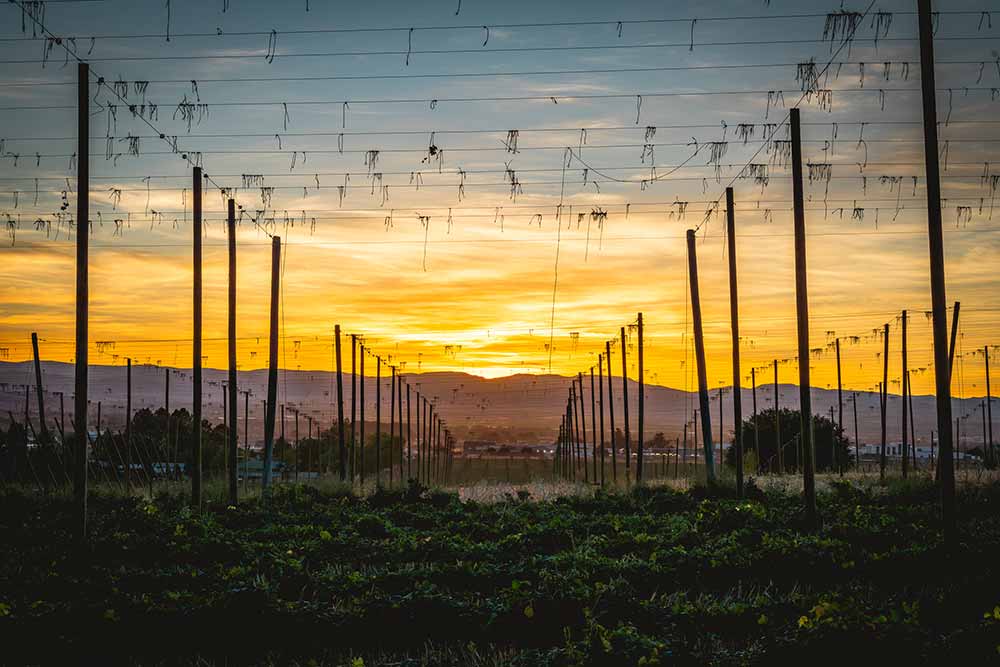
Photography courtesy of Bale Breaker Brewing Company
As we said goodbye to Kevin, Meghann, and Smitty, we gave one last longing look at the trellis bordering the back beer garden. With the sun shining down, our bellies full of tacos, and our taste buds hyped on fresh-hop beers, we couldn’t help but feel gratitude.
Thinking back to what Brynildson said two years ago…
That next great IPA that was hanging above us?
We probably just drank it.

